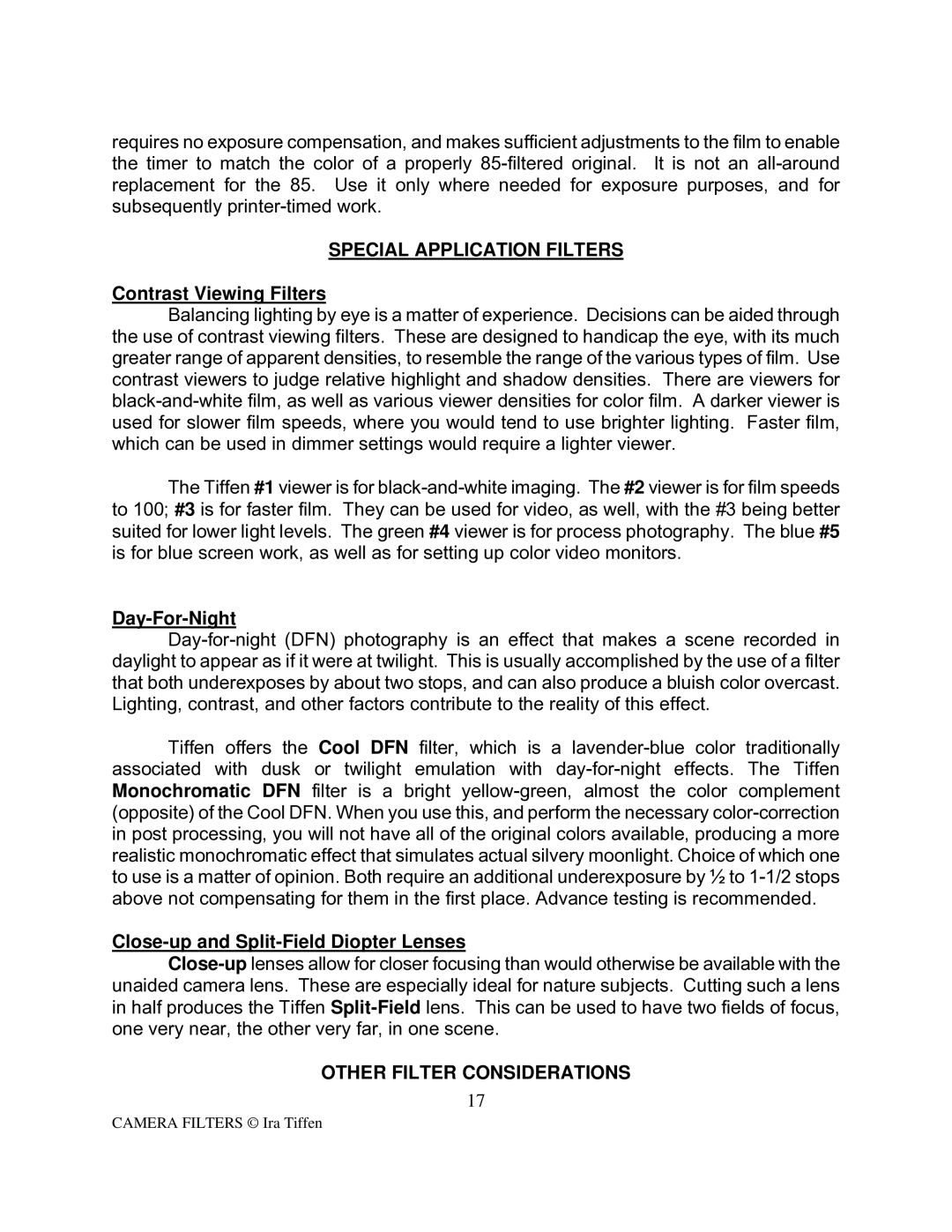requires no exposure compensation, and makes sufficient adjustments to the film to enable the timer to match the color of a properly 85-filtered original. It is not an all-around replacement for the 85. Use it only where needed for exposure purposes, and for subsequently printer-timed work.
SPECIAL APPLICATION FILTERS
Contrast Viewing Filters
Balancing lighting by eye is a matter of experience. Decisions can be aided through the use of contrast viewing filters. These are designed to handicap the eye, with its much greater range of apparent densities, to resemble the range of the various types of film. Use contrast viewers to judge relative highlight and shadow densities. There are viewers for black-and-white film, as well as various viewer densities for color film. A darker viewer is used for slower film speeds, where you would tend to use brighter lighting. Faster film, which can be used in dimmer settings would require a lighter viewer.
The Tiffen #1 viewer is for black-and-white imaging. The #2 viewer is for film speeds to 100; #3 is for faster film. They can be used for video, as well, with the #3 being better suited for lower light levels. The green #4 viewer is for process photography. The blue #5 is for blue screen work, as well as for setting up color video monitors.
Day-For-Night
Day-for-night (DFN) photography is an effect that makes a scene recorded in daylight to appear as if it were at twilight. This is usually accomplished by the use of a filter that both underexposes by about two stops, and can also produce a bluish color overcast. Lighting, contrast, and other factors contribute to the reality of this effect.
Tiffen offers the Cool DFN filter, which is a lavender-blue color traditionally associated with dusk or twilight emulation with day-for-night effects. The Tiffen Monochromatic DFN filter is a bright yellow-green, almost the color complement (opposite) of the Cool DFN. When you use this, and perform the necessary color-correction in post processing, you will not have all of the original colors available, producing a more realistic monochromatic effect that simulates actual silvery moonlight. Choice of which one to use is a matter of opinion. Both require an additional underexposure by ½ to 1-1/2 stops above not compensating for them in the first place. Advance testing is recommended.
Close-up and Split-Field Diopter Lenses
Close-uplenses allow for closer focusing than would otherwise be available with the unaided camera lens. These are especially ideal for nature subjects. Cutting such a lens in half produces the Tiffen Split-Fieldlens. This can be used to have two fields of focus, one very near, the other very far, in one scene.
OTHER FILTER CONSIDERATIONS
17
CAMERA FILTERS © Ira Tiffen
